Trzin, 28.07.2016. UF PRO® introduced today the new generation of the Monsoon waterproof/breathable jackets.
UF PRO® is launching a new generation of waterproof/ breathable jackets, namely the Monsoon and the Monsoon XT Gen.2 Jacket. The two jackets differ in material and cut; the XT version is the more robust version, whereas the Monsoon jacket offers a more civilian look.
Both jackets are made out of a 3-layer GORE-TEX® laminate which offers a hydrostatic head of 150m, equivalent to a water column up to 15 bar, without any water penetration and great breathability capabilities.
But the Monsoon Jackets don’t only bring great materials and waterproof construction to the table. Two features really set the jackets apart from all the rest.
The hood has an integrated system, which the folks at UF PRO® call the Hood/Harness®. The harness works as a base cap, you simply adjust it according to your head size and when you wear it, the hood follows your neck movements, without the need to strap the hood to your head. Since the laminate isn’t directly in touch with your head, air circulation and your ability to hear is still intact, even while wearing a hood.
The other feature is called the air/pac® insert. This 8mm thick mesh inserts in the shoulder area distribute the weight of plate carriers or backpacks and prevent the formation of thermal bridges. With the new Monsoon generation, UF PRO® glues the pocket configuration onto the jacket, instead of seam sealing them. This makes the pocket configuration extremely water resistant and the jackets even lighter.
The price for the new Monsoon Jackets starts at 440.00€ and they are available in Black, Brown-Grey and MutliCam®.
Head over to UF PRO® and check out the new Monsoon jackets: www.ufpro.si/monsoon
Tags: Ufpro


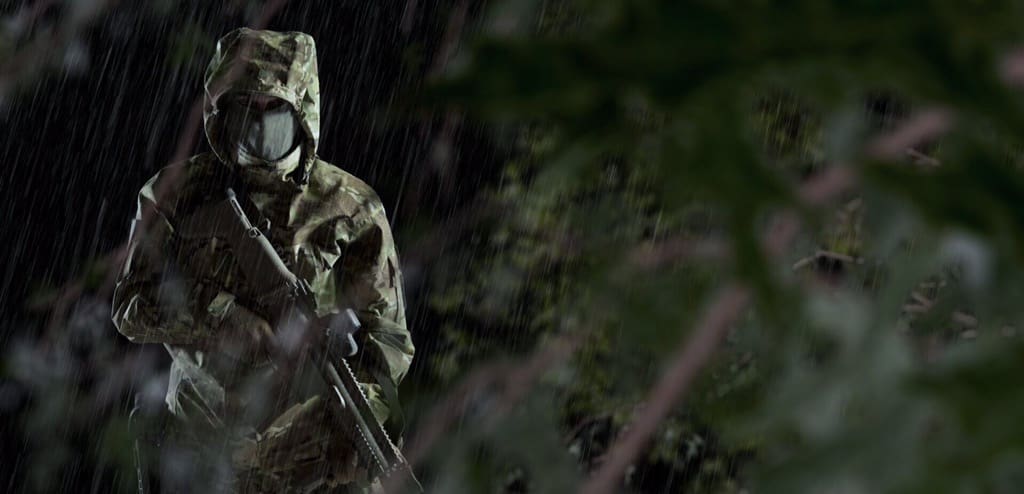
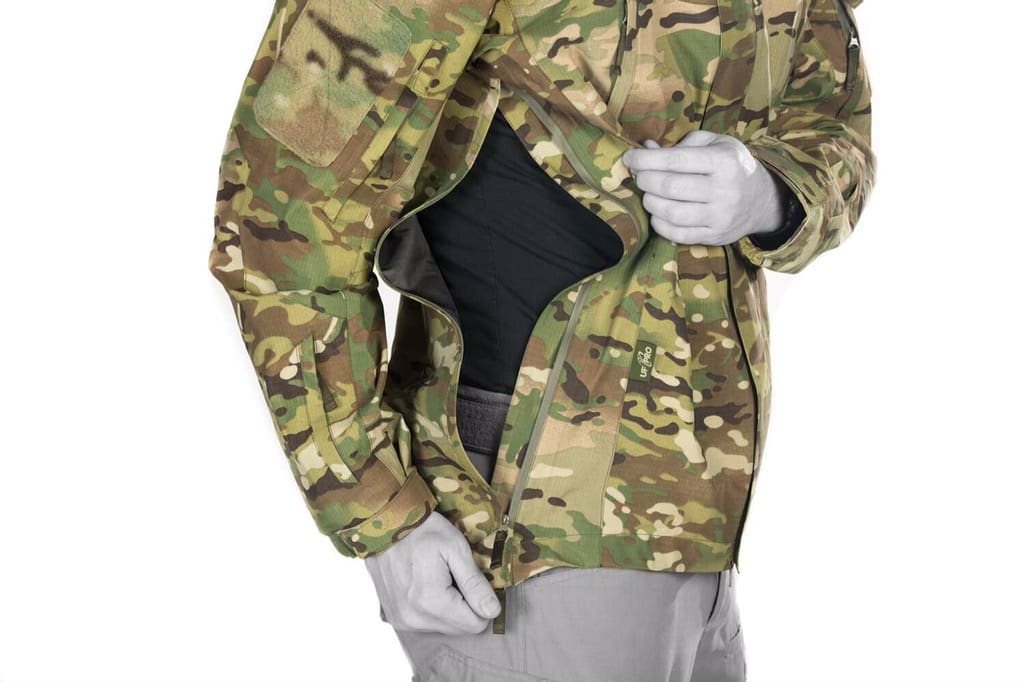
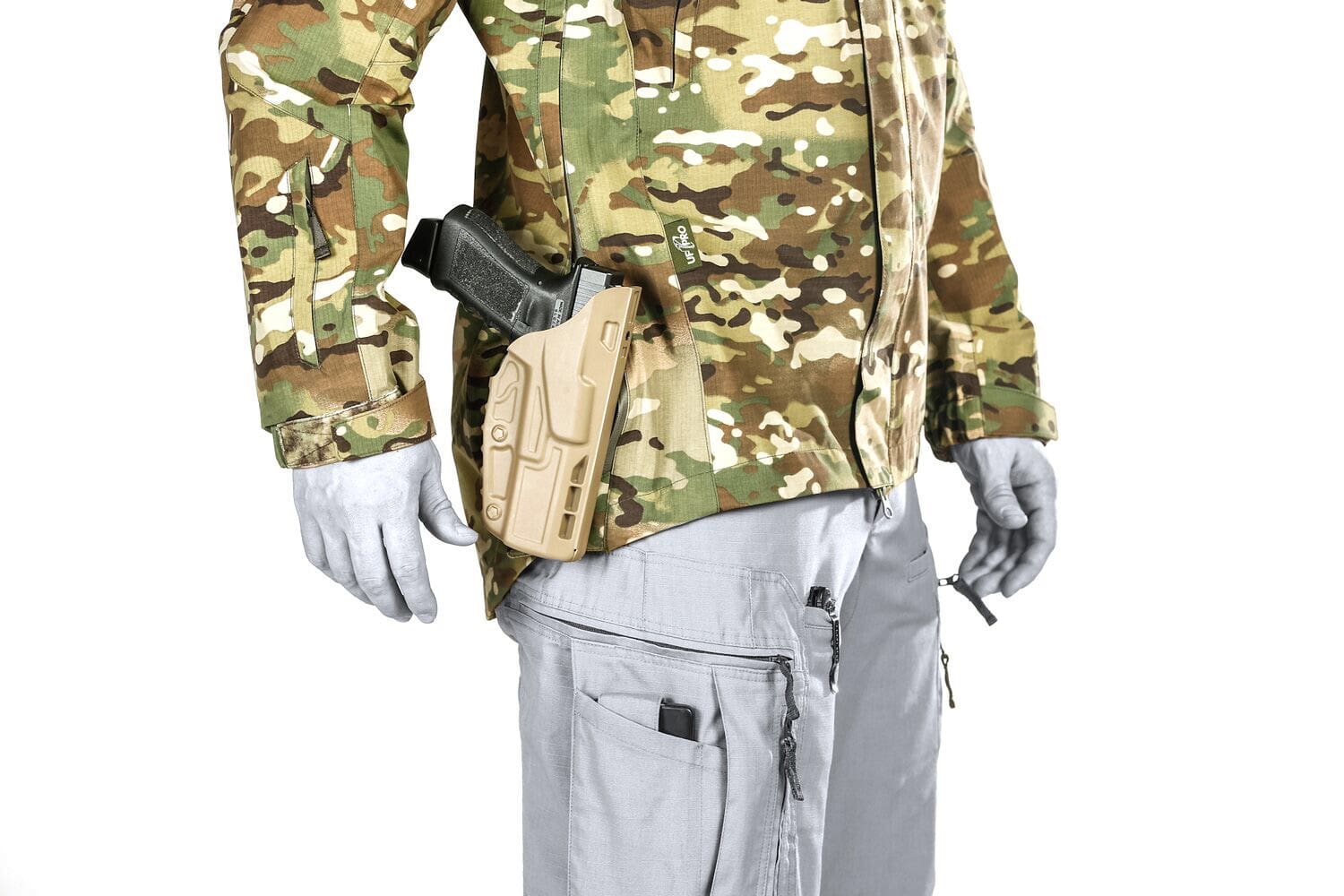
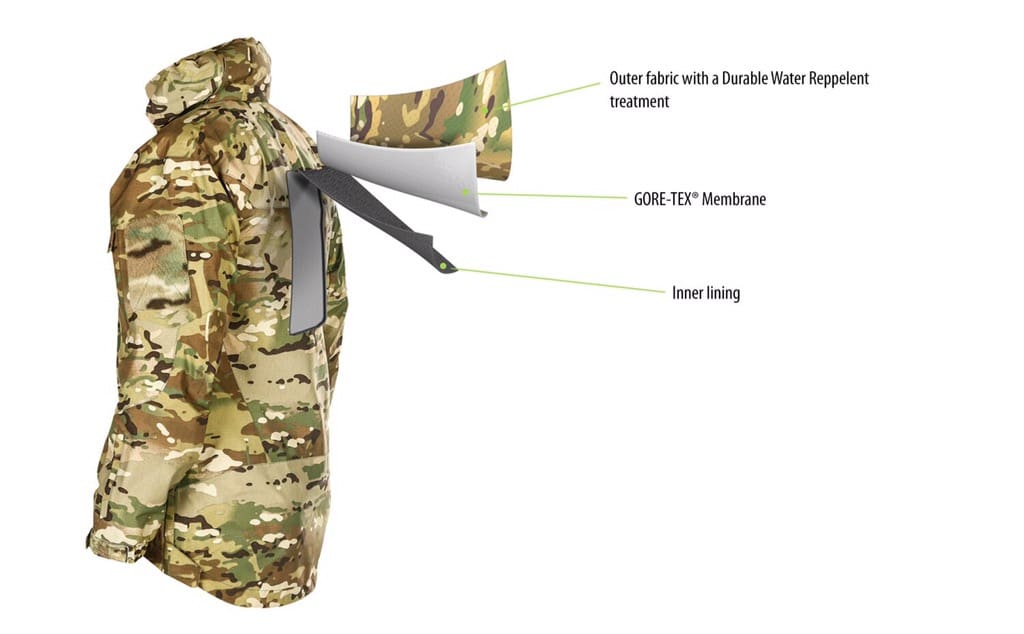

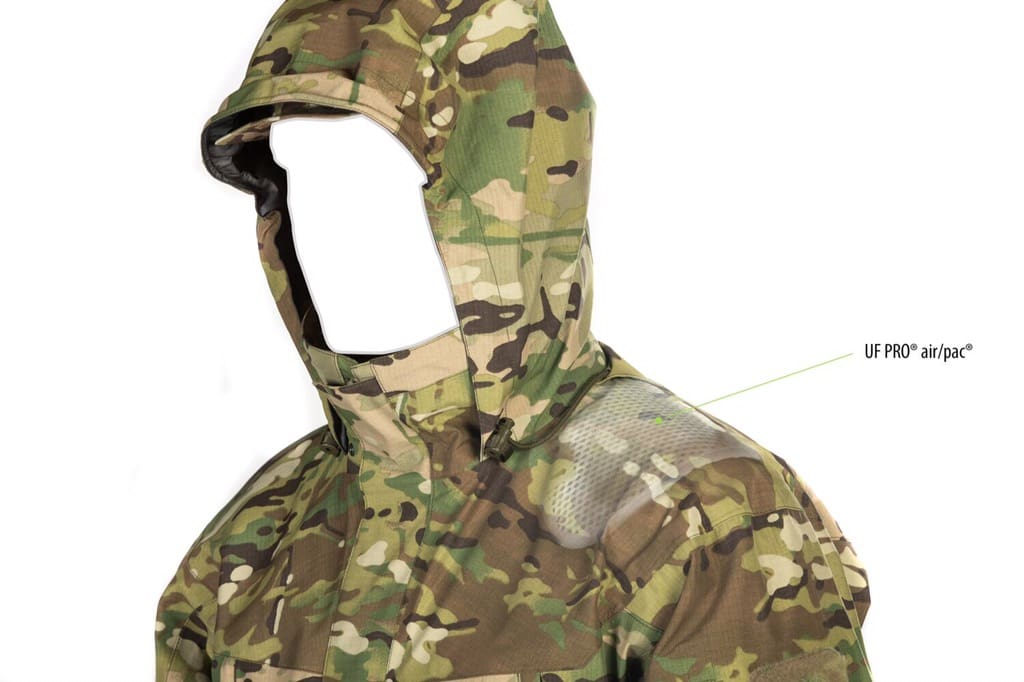
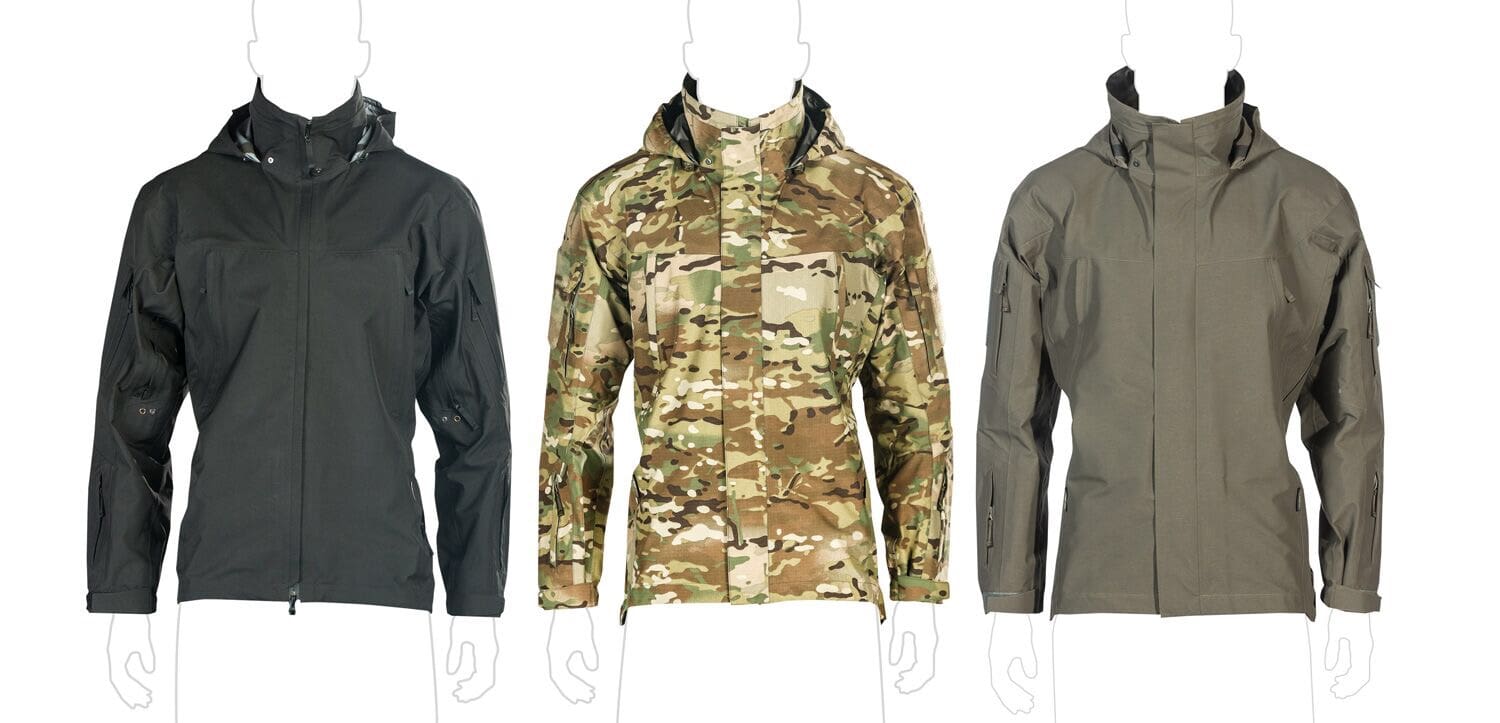
This jacket does NOT have a hydrostatic head of 150m(eters). Goretex Pro has around 25-28000 mmH20 (that’s 25-28mH20) which is ~2.75bar.
Traditionally anything above 10000 mmH20 is considered waterproof.
I must admit that 150 m seems high, but I can’t refute it and I’m not going to make wild claims without evidence. Do you have access to the testing data, because that would be a good way to clear this up? The hydrostatic head rating only refers to the environmental side of the fabric combination, and does not specify the the evaporate resistance of the fabric. The hydrostatic rating will degrade over use as dirt, grime, stretching, abrasion, and coating degradation. On their website they mention this was measured at WIM Erding for the specific laminate used by the German “Bundeswehr”. WIM Erding appears to be the German version of the Natick labs, so I’m going to take the report as accurate, especially because of the reference professional testing. Government buyers want to have everything tested, and to lie/misrepresent qualities as a manufacturer would be beyond foolish, although it has happened. The hydostatic head prevents the water coming in through the fabric from the outside, which can occur when the liquid is compressed under pack straps, LBV, armor, body weight, etc.
This is not to say the vapor permeability or “evaporation resistance” is better or equal to that of another “waterproof breathable” fabric for instance. They do not make that claim. You may well be correct that this is less permeable than other offerings. This is what I’m assuming you’re referring to as it being “waterproof” in your statement. This cannot be determined without the testing data. The permeability capability is dependent on the partial pressure gradient between the inside and outside of the fabric, which you can condense to thinking about relative humidity inside and outside the jacket. This is why the nonwetting/hydrophobic capability of the outside shell is so important to the functioning of the fabric.
For anyone who is interested, I suggest the reference at the bottom of the Wikipedia page on “Breathability (Fabric)” just be aware the Wikipedia page itself isn’t great, the reference is written by a Natick employee. Just remember that you can put out about a L/hr under heavy exertion when you’re not compensating for energy storage (overheating, worst case), otherwise crack open your handy dandy minimum hydration standards and that’s about what you’re putting out in sweat for a temperature/workrate. Couple this with the average body surface area of 1.8 m^2 and for every 500g on the graph in the reference you go up by 38 g/hr of capacity to a respectable .5 kg/hr at the 7500 g/(m^2-day) mark under the testing standard air flow conditions. Obviously, this reference is a bit dated, but I’m doing this on lunch so I’m not going deep into the literature. In this graph Goretex XCR maxes out at about 277 g/hr at the best case scenario (i.e. wearing Goretex in the dry desert) over the whole body and worst case (high outside humidity, i.e. raining) it goes down to 120 g/hr. This is obviously assuming you have pants, a jacket and Gore-tex boots. In order to drive this process, the humidity inside must be higher than the outside value. Obviously the transport value will go up when the wind is blowing hard, and down when there is no wind, which is why there are multiple measurements. Furthermore, different aspects of the fabric influence comfort and moisture transport. If you have a pack, armor, and or chest rig, this decreases your ability to evaporate from this area and makes this effect worse. Anyone who has ever gone backpacking knows that ventilation is sometimes more important than vapor permeability in “waterproof breathable fabric”. In short, if you’re considering making a purchase ask them about the test protocols and how their product stacks up to the competition in these areas. If they won’t tell you it is not that unsurprising, although if they do it may involve an NDA. There are a number of interrelated issues concerning “waterproof breathable fabric” and trade-offs that must be made by the end user, and significant confusion by the customer as to what they need or want. However, the highly competitive nature of the industry means that while one fabric might be better for one use, but worse for another everyone highlights their own strengths over their competitors, which is why you’re not likely to get the data from them, except in comparison form. Shop around and you can get a pretty good picture of what the fabrics do well and what they don’t do well. I always suggest REI’s helpful advice pages as well such as “Rainwear: how it works” for a decent explanation.
I read that backwards, apologies on the assumption on “waterproof”. Now I see the point you were making. All the methods are different and there is no accepted standard test method or requirement. Sometimes a requirement wants you to go high, but usually that is for tent floors and such, even then water has a tendency to “move out of the way”. Having that high of a “waterproof” rating is insane, but probably came out of their test method they used.
Simple way to refute their claim is that Goretex doesn’t have a product with a hydrostatic head/water column of 150 meters- and no other commonly known membrane manufacturer in the apparel industry has either.
Their numbers listed are weird. 0,8m(800mm) isn’t considered waterproof by anyone I know of- and I agree with numbers and recommendations listed here as they match my experience with membrane fabrics. http://www.evo.com/guides/outerwear-waterproof-ratings-and-breathability. Schoeller says 2000-3000mm minimum (http://www.schoeller-tech.com/en/water-repellent-fabric/).
And you’re right, hydrostatic head is a lab test that doesn’t talk about either air permeability or breathability, it only talks about how waterproof the fabric is in a lab condition without any other external input.
I used to work as product manager at W.L.Gore in Germany from 1991 a 1997? I was primarily responsible for the military and law enforcement markets all over Europe. During that time, the German military institute for development and research built a specific test device, which could measure water entry pressures with textiles up to 15 bar (equals 150m of water column). There were 2 materials, which achieved that value and that was Sympatex and GORE-TEX. As Usual test emthods do not measure such high water entry pressures, W.L. gore does not mention these values in the usual collateral.
Now talking about GORE-TEX Pro: one should be aware that it uses a different membrane, and is not recommended currently for any military applications.
By the way Lasse: the official definition of a “water proof” textile is at 0.8 bars of water entry pressure. Of course this is a very low value, but is still commonly used, unfortunately. I totally agree with you there, it is weird, but a fact. The main question is: how much water entry pressure would you need. For a tarp you,probably would not need that much. Garments: considering pressure points like the knees, when kneeling, your back while sitting, there pressures of 4-5 bars highrr occur. Therefore I prefer membrane products with higher water entry pressure. And I appreciate the reserves, which I have with GORE-TEX products.
Thanks for the insight!
So this has a WEP rating of 150m.
Can you convert WEP results to traditional water column results? Can one say that 150m is the same as ~20k mm? I get that they are completely different tests and don’t test the same thing, I’m more curious to see what their water column is..
Lasse, the conversion is: 1bar equal 1m or 1000mm of water entry pressure. So this WEP is also the water column. The traditional 0.8bar are 8m or 8000mm of WEP or water column
I used to work as product manager at W.L.Gore in Germany from 1991 a 1997? I was primarily responsible for the military and law enforcement markets all over Europe. During that time, the German military institute for development and research built a specific test device, which could measure water entry pressures with textiles up to 15 bar (equals 150m of water column). There were 2 materials, which achieved that value and that was Sympatex and GORE-TEX. As Usual test emthods do not measure such high water entry pressures, W.L. gore does not mention these values in the usual collateral.
Now talking about GORE-TEX Pro: one should be aware that it uses a different membrane, and is not recommended currently for any military applications.
Please tell me they have a version without ghey patch panels
Went a little Black Ops II there didn’t ya? I liked it though.
Curious about the hood system. sounds vaguely similar to the horrible ECWCS hood with the internal elastic. I’m sure it is 1000X better but I wonder how much more vulnerable this makes the looser hood to wind.
If the wind is too heavy you can still use the hood adjusters to make sure as little wind as possible comes inside the hood…but you’ll probably have to do this only during really strong winds.